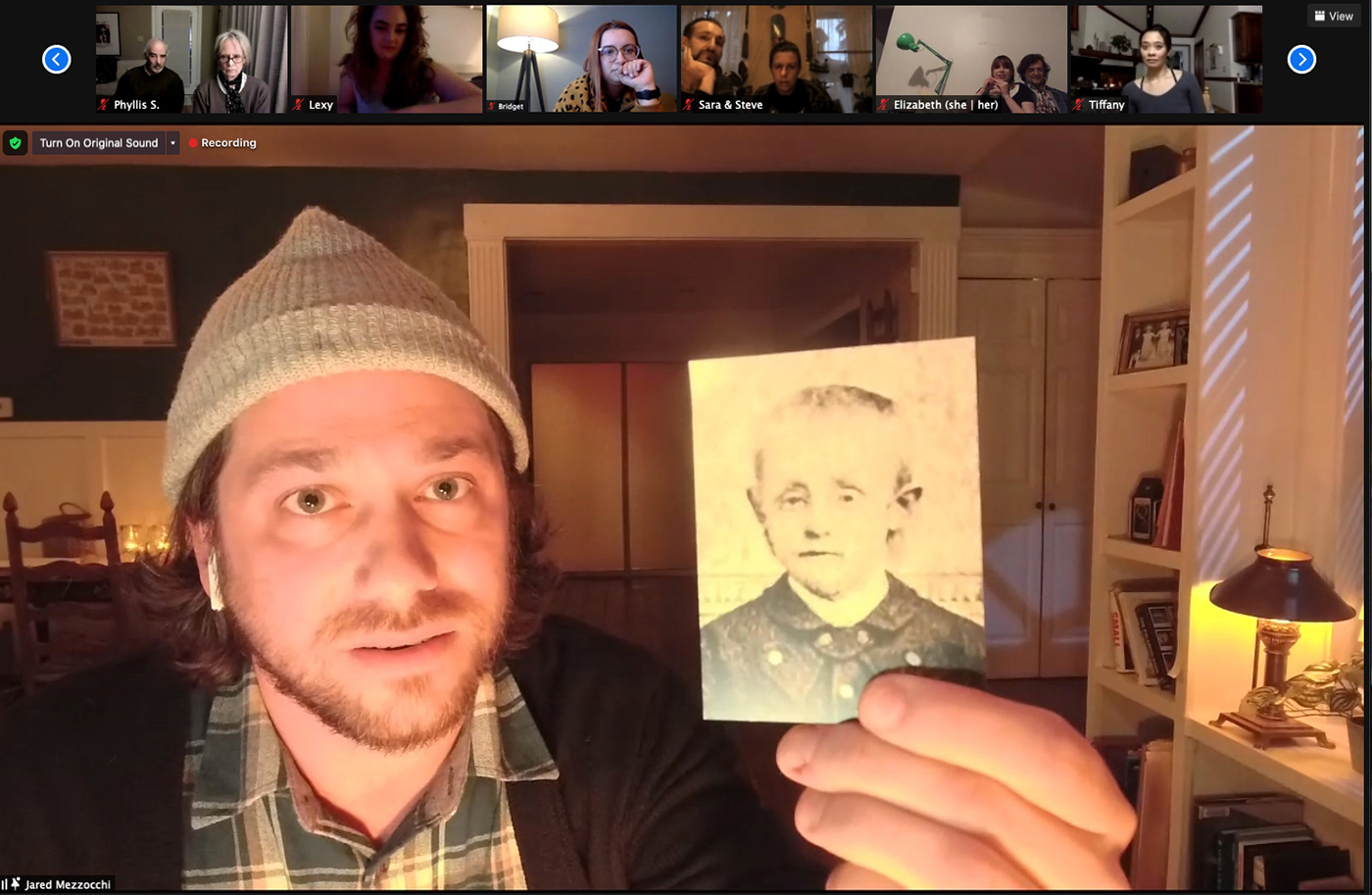Theater review: ‘Someone Else’s House’ immerses audience in eerie virtual experience at home

(Courtesy of Geffen Playhouse)
"Someone Else's House"
April 23 – July 3
Online
$75
By Laura Carter
May 5, 2021 12:36 p.m.
A new virtual theater experience shows viewers the horrors of entering “Someone Else’s House” uninvited, especially when the residents are dead.
The Geffen Stayhouse production of “Someone Else’s House,” running until July 3, immerses audience members in the horrors of the Mezzocchi family’s experience with living in a spooky, old New England home. By integrating a “haunting kit” that’s mailed to the homes of attendees and having the main actor, Jared Mezzocchi, play himself and speak directly to the audience, the play encourages a collaborative environment for audience members to engage with the story as it unfolds.
[Related: San Diego Opera stages ‘The Barber of Seville’ in drive-in format]
The production opens with Mezzocchi asking the audience if they believe in ghosts, then proceeding to preface a series of true events that happened to his family after moving into a 200-year-old New Hampshire estate. Mezzocchi describes how paranormal events shaped the lives of many of his family members, noting that his older brother still recalls the trauma of living in the haunted house.
He then instructs audience members to open their “haunting kit” while dimming their lights – a small interactive note that effectively helps audience members extend the creepy ambiance from the screen to their personal viewing space. After creating the ghostly ambiance, a series of eerily intentional camera glitches sporadically interrupt Mezzocchi as he provides background on the home prior to his family’s move. In a creative attempt to engage viewers, Mezzocchi reveals a series of facts about the Johnson family members by calling on people to read cards from their “haunting kit.” Each kit comes with a different set of cards, so careful listening is necessary to fully comprehend the story.
Mezzocchi explains that once his family moved in, they began customizing the home by changing the front of the house from its original bloody red to a fresh white color. From this point forward, the Mezzocchi family began to notice strange events in increasing intensity, including a spine-chilling appearance of an indoor beehive and the house’s interior oozing with blood from the walls.
Because audience participation is limited at this point in the play, the engagement dwindles. And though Mezzocchi speaks to the audience directly to add a sense of intimacy, the lengthy backstory slowly becomes more snooze-worthy than scary.
[Related: ‘Chevy Mystery Show’ episode screening prompts discussion on impact of ‘Columbo’]
After these mysterious events, Mezzocchi’s family moves out of the house and he reveals that the prior owner James Willis “J.W.” Johnson suffered a great deal of loss before he purchased the house, including losing his son Edward who died after a series of facial bee stings. And during a long-overdue scene shift, Mezzocchi reveals that he has pieced together why his family’s experience in the house was so strange – his family’s attempt to transform the home disrupted J.W. Johnson’s dying wish to leave the house untouched.
Mezzocchi soon jumps from this historical background on the Johnson family to explain that the house was converted into a quaint bed-and-breakfast once the family moved out, then becoming an apartment complex with four vacant units. The culmination of the play begins as the past joins the present and the audience suddenly realizes that Mezzocchi is sitting in one of the vacant units of the Johnson house. He grabs the camera to walk around and explore different areas of the unit before flickering lights, mysteriously slamming doors and camera glitches get progressively more intense.
Audience interaction begins to diminish as Mezzocchi experiences spine-chilling events at a distance, without the opportunity for outside contribution. As Mezzocchi runs frantically through his house, the play highlights believable autonomous movements of furniture, windows and doors, but the story ultimately ends on a mysteriously unsatisfying note.
Overall, the effort to build suspense and emphasize the horrific conclusion of the play disappointingly backfires with moments that disengage audience members. The excessive background information creates extra space within the performance’s timeframe that removes spectators from the edge of their seats instead of keeping them there. But despite the information overload, “Someone Else’s House” was somewhat successful in creatively integrating audience interaction and utilizing the Zoom platform to create a collaborative rather than spectatorial experience.
Though virtual plays are difficult to produce, the Geffen Stayhouse successfully haunts viewers and reminds them of what can happen upon entering “Someone Else’s House.”


